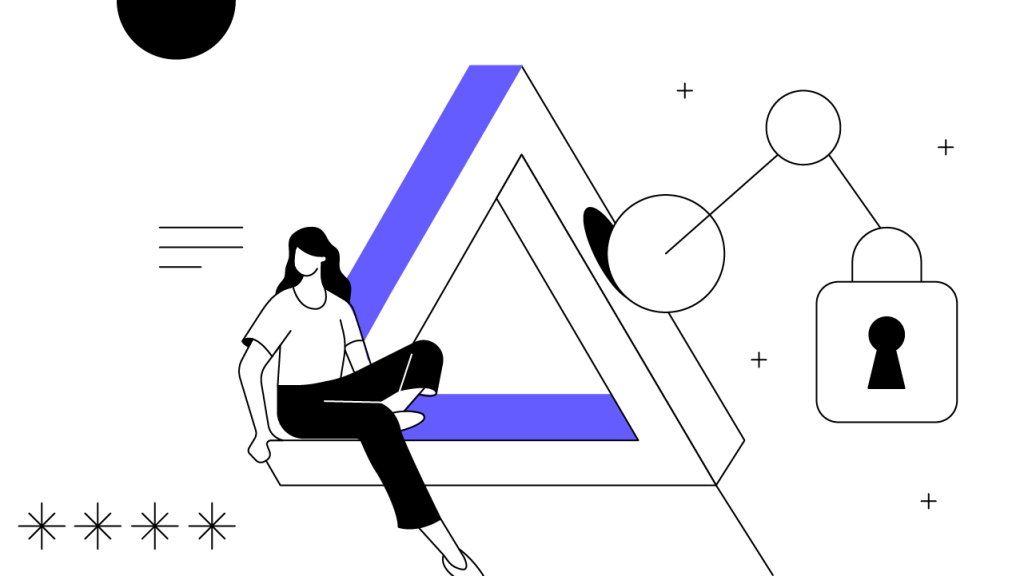Contents
ARPA Chain (ARPA): Privacy-Preserving Layer-2 Computation
ARPA Chain is a blockchain-agnostic Layer-2 computation network that places privacy first and foremost.
Updated May 24, 2022 • 4 min read

Summary
ARPA Chain is a Layer-2 scaling solution built to operate as a privacy-preserving computation network. That means it can offer a dramatic boost to the transaction throughput of blockchain networks while maintaining high standards for data privacy and security. ARPA utilizes Secure Multi-Party Computation (SMPC) and secret-sharing technology to maintain privacy and computational accuracy.
ARPA Chain: Unmitigated Privacy Preservation on Blockchain
Of the myriad ways that blockchain technology aims to improve the internet, privacy is a key priority. As Layer-1 networks like Ethereum have sought to lay the groundwork for a better web, a new generation of platforms and products is emerging to directly address internet shortcomings for specific use cases. ARPA Chain is a Layer-2 scaling solution designed to better protect our privacy, while helping you get the most out of leading blockchain networks.
Most blockchain networks can achieve on-chain consensus by verifying network operations through a network of nodes acting in unison. This model is highly secure and thorough, but may decrease transaction processing times and limit protocol scalability. Layer-2 computation — or off-chain computation — addresses this problem with varying methods that move transactions to a separate chain for more effective computation. ARPA’s Layer-2 scaling platform employs what it calls privacy-preserving Secure Multi-Party Computation (SMPC) for data-sharing between multiple parties in a high-security, cryptographically verifiable manner.
Arpa Network’s and Secure Multi-Party Computation (SPMC)
Secure Multi-Party Computation allows the ARPA Layer-2 solution to protect and validate transactions while increasing transaction processing times for practically any blockchain network. According to ARPA, privacy-preservation with SMPC is more advanced than other methods such as homomorphic encryption (HE), zk-SNARKs, Zero-Knowledge Proofs (ZKPs), and Trusted Execution Environments (TEEs). SMPC has advantages in terms of scalability, flexibility, trust, and practical efficiency for a wide range of real-world uses. ARPA Chain makes use of several main design parameters to achieve this, including:
Security-first, verifiable computation: Computation on the ARPA crypto network is designed to ensure that nodes are unable to receive secure data to which they do not initially have access. This design can improve overall network scalability and processing times for sovereign networks.
Blockchain agnostic and interoperable: By combining secure and verifiable computation, the complex nature of computation is performed off-chain. This allows SMPC to be deployed on any independent blockchain network in an interoperable manner.
Scalability: ARPA is designed to ensure that on-chain networks never reach their gas limits. This allows the system to dramatically increase transaction times for Layer-1 blockchains.
Efficiency and availability: SMPC technology can significantly improve platform speed. ARPA Chain allows for high-availability and low-cost computations.
ARPA Network Structure
ARPA is built using a dual-tiered structure made up of two separate layers and other main components:
Protocol layer: The protocol layer is the foundation of the ARPA network. It operates in a decentralized and permissionless manner that allows nodes to join autonomously. It also enables the contribution of computational power in exchange for ARPA token incentives. In addition, the protocol layer helps organize multi-party computation for the computation layer and records all network node activity to limit malicious behavior.
Computation layer: The computation layer is designed specifically to allow nodes on ARPA to collectively carry out multi-party computation. The computation layer is used to cryptographically verify and prove the integrity of all processes that take place on the platform. This layer also works with the protocol layer to penalize malicious nodes and reward well-behaving participants with ARPA tokens.
Separately, the network operates by employing three distinct systems to achieve proper network consensus:
Proof of Correctness: Proof of Correctness operates in a similar manner to Proof of Work (PoW). Typically, on PoW blockchains, all nodes contribute to consensus. With secure computation on ARPA, Proof of Correctness works by delegating computation only to certain nodes on the network. This delegation process is meant to improve network efficiency, transaction throughput, and code execution security. Proof of Correctness is the main algorithm responsible for consensus on the ARPA network.
Proof of Computation: Proof of Computation is responsible for monitoring the amount of computation that nodes complete on the network. The system records node participation levels and releases rewards in proportion to their efforts by keeping track of data during multi-party computation processes.
Proof of Secureness: Proof of Secureness is used to verify computations that take place off-chain through Trusted Execution Environments. TEEs are off-chain networks that contribute additional computational power to the primary network. Proof of Secureness helps guarantee that TEEs conduct computation in a correct and timely manner, mitigating the chances of data inefficiencies.
Furthermore, the ARPA token allows the ARPA crypto ecosystem to fulfill various operational and governance mechanisms. These include staking and security deposits via network nodes as well as payments for computational costs, community governance, data, and model usage fees. The ARPA token is burned on a quarterly basis to incentivize token holders.
ARPA Chain Crypto Utility and Uses Cases
ARPA Network’s privacy-preserving Layer-2 framework is designed to apply to various use cases. It can serve as a data computation and storage network, and can support applications in financial technology (FinTech) and insurance, artificial intelligence (AI), Internet of Things (IoT), healthcare, digital advertising, and retail. The system can also be used for data marketplaces, key management, blind voting, dark pool trading, and personal data wallets. Additionally, ARPA Chain can be utilized for credit and anti-fraud mechanisms that allow banks to share credit blacklists in order to optimize risk management readiness.
ARPA is also developing Randcast, a system for decentralized random number generation (RNG) that allows developers to create decentralized applications (dApps) using a low-fee structure. Randomness is critical to the security of computing because it reduces the potential for attacks. Through RNG tech, Randcast will help address the limited verifiable random function (VRF) market in blockchain, allowing for the simple, low-cost development of systems that enable decentralized gaming, lotteries, and non-fungible token (NFT) collections.
Cryptopedia does not guarantee the reliability of the Site content and shall not be held liable for any errors, omissions, or inaccuracies. The opinions and views expressed in any Cryptopedia article are solely those of the author(s) and do not reflect the opinions of Gemini or its management. The information provided on the Site is for informational purposes only, and it does not constitute an endorsement of any of the products and services discussed or investment, financial, or trading advice. A qualified professional should be consulted prior to making financial decisions. Please visit our Cryptopedia Site Policy to learn more.

Is this article helpful?


